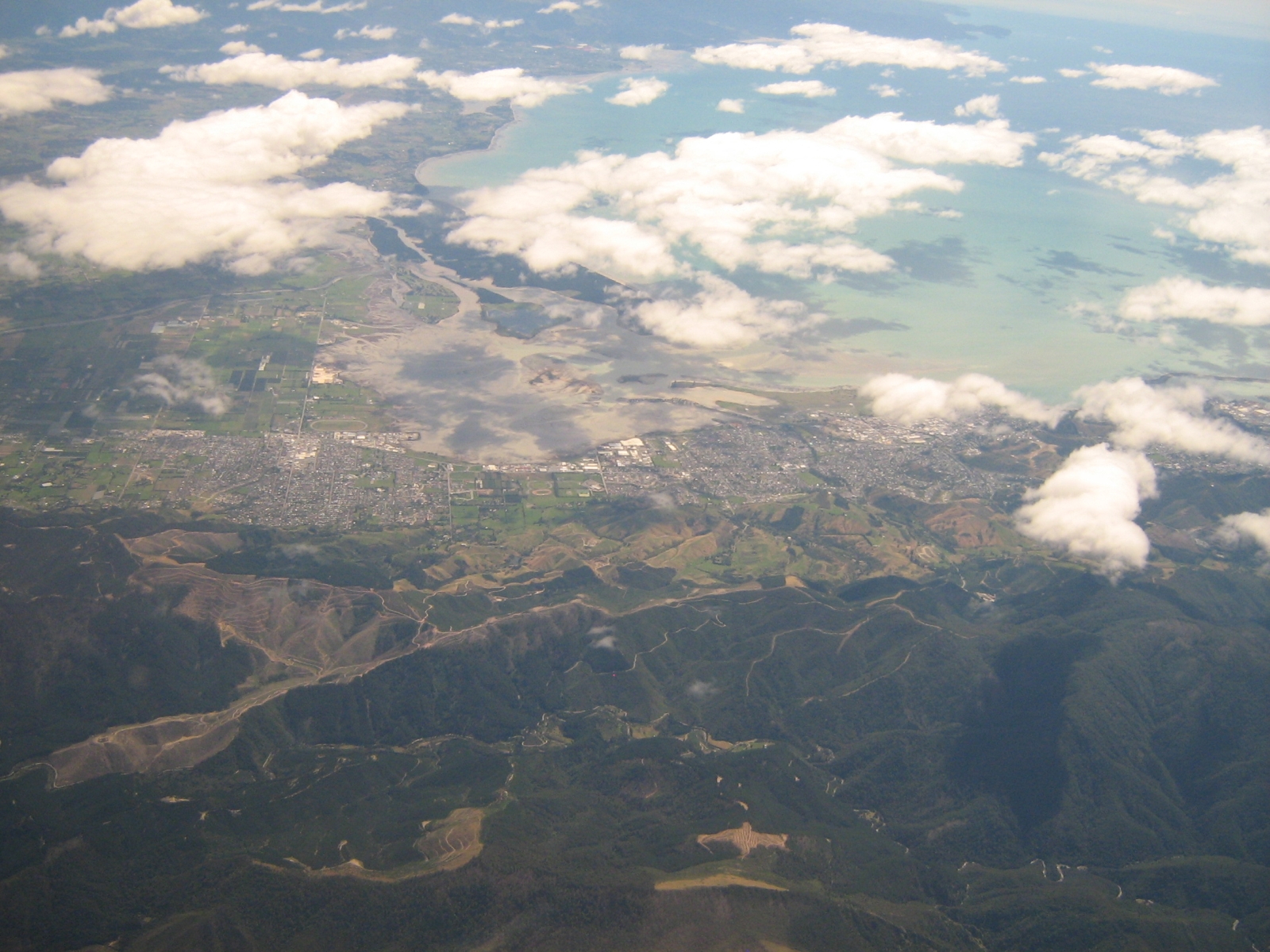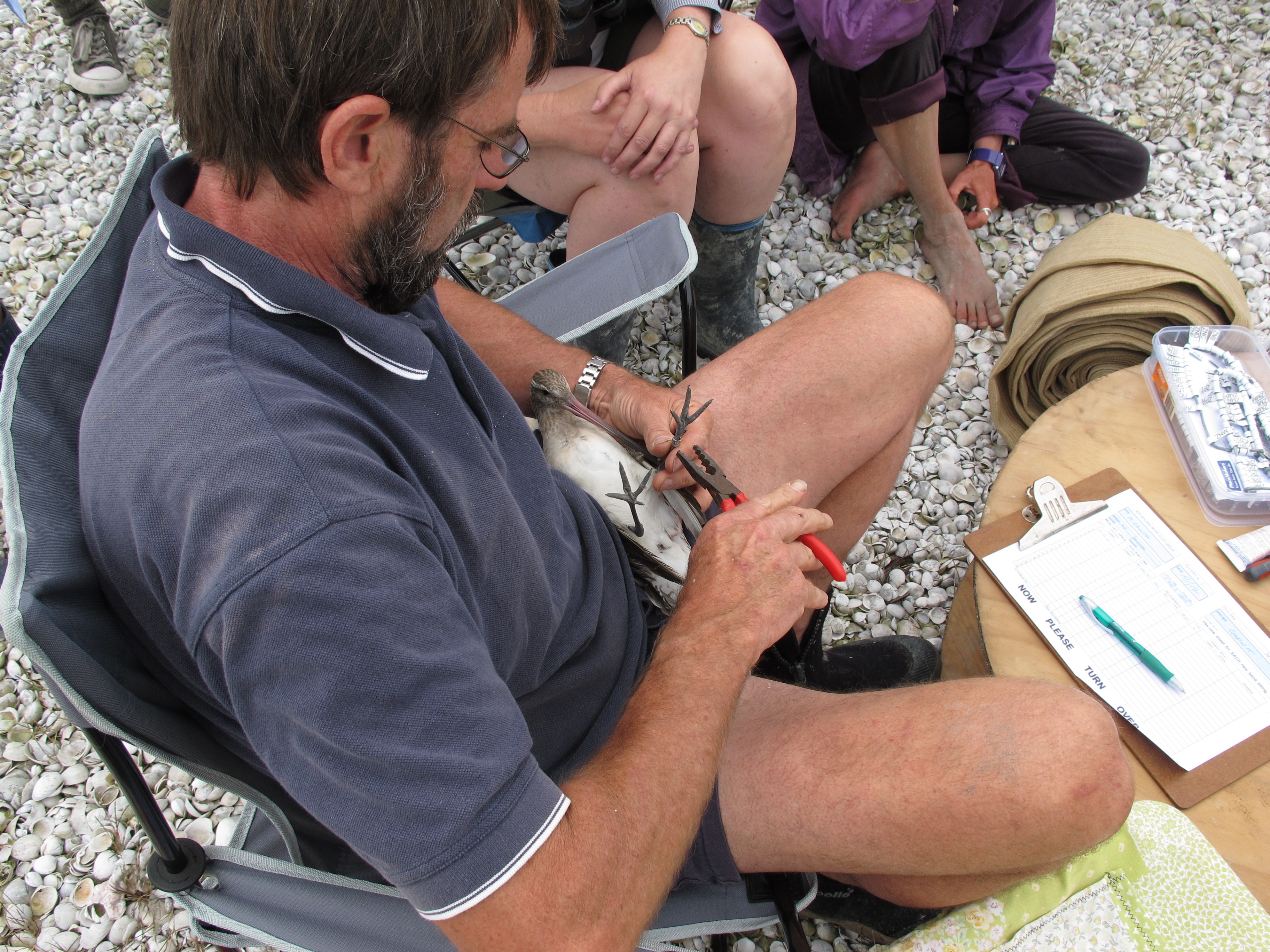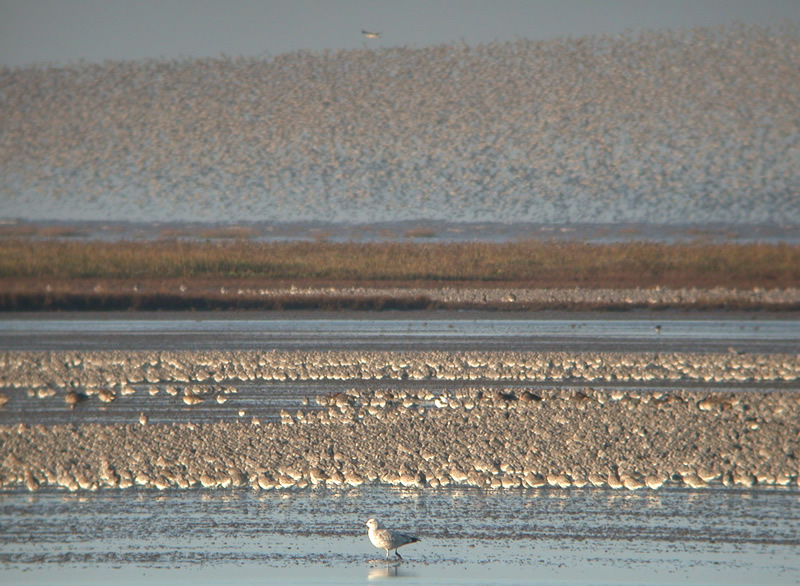|
Whanganui Inlet
Whanganui Inlet, commonly known by its former name Westhaven Inlet or West Haven, is a large natural indentation in the northwest coast of the South Island of New Zealand. The inlet is a drowned river valley running parallel to the west coast. It is some in length and on average is about wide. A narrow channel halfway along the valley connects the inlet to the Tasman Sea. This channel is located southwest of Farewell Spit. It is still in a largely unspoilt natural state, with seagrass and salt marsh providing an environment friendly to sea life. It is a popular site for fishing and boating, and much of the inlet is protected by a wildlife management area and by the Westhaven Marine Reserve. 42 species of water bird have been seen in the Inlet, including South Island oyster catcher, bar-tailed godwit, knot, banded dotterel and banded rail The buff-banded rail (''Hypotaenidia philippensis'') is a distinctively coloured, highly dispersive, medium-sized rail of the rail fa ... [...More Info...] [...Related Items...] OR: [Wikipedia] [Google] [Baidu] |
Tasman District
Tasman District () is a local government district in the northwest of the South Island of New Zealand. It borders the Canterbury Region, West Coast Region, Marlborough Region and Nelson City. It is administered by the Tasman District Council, a unitary authority, which sits at Richmond, with community boards serving outlying communities in Motueka and Golden Bay / Mohua. The city of Nelson has its own unitary authority separate from Tasman District, and together they comprise a single region in some contexts, but not for local government functions or resource management (planning) functions. Name Tasman Bay, the largest indentation in the north coast of the South Island, was named after Dutch seafarer, explorer and merchant Abel Tasman. He was the first European to discover New Zealand on 13 December 1642 while on an expedition for the Dutch East India Company. Tasman Bay passed the name on to the adjoining district, which was formed in 1989 largely from the merger of Wai ... [...More Info...] [...Related Items...] OR: [Wikipedia] [Google] [Baidu] |
Nelson, New Zealand
Nelson () is a List of cities in New Zealand, city and Districts of New Zealand, unitary authority on the eastern shores of Tasman Bay at the top of the South Island of New Zealand. It is the oldest city in the South Island and the second-oldest settled city in the country; it was established in 1841 and became a city by British royal charter in 1858. Nelson City is bordered to the west and south-west by the Tasman District and to the north-east, east and south-east by the Marlborough District. The Nelson urban area has a population of , making it New Zealand's 15th most populous urban area. Nelson is well known for its thriving local arts and crafts scene; each year, the city hosts events popular with locals and tourists alike, such as the Nelson Arts Festival. Naming Nelson was named in honour of Admiral Horatio Nelson, 1st Viscount Nelson, Horatio Nelson, who defeated both the First French Empire, French and Spanish fleets at the Battle of Trafalgar in 1805. Many roads ... [...More Info...] [...Related Items...] OR: [Wikipedia] [Google] [Baidu] |
South Island
The South Island ( , 'the waters of Pounamu, Greenstone') is the largest of the three major islands of New Zealand by surface area, the others being the smaller but more populous North Island and Stewart Island. It is bordered to the north by Cook Strait, to the west by the Tasman Sea, to the south by the Foveaux Strait and Southern Ocean, and to the east by the Pacific Ocean. The South Island covers , making it the List of islands by area, world's 12th-largest island, constituting 56% of New Zealand's land area. At low altitudes, it has an oceanic climate. The most populous cities are Christchurch, Dunedin, Nelson, New Zealand, Nelson and Invercargill. Prior to European settlement, Te Waipounamu was sparsely populated by three major iwi – Kāi Tahu, Kāti Māmoe, and the historical Waitaha (South Island iwi), Waitaha – with major settlements including in Kaiapoi Pā near modern-day Christchurch. During the Musket Wars expanding iwi colonised Te Tau Ihu Māori, Te Tau Ihu, ... [...More Info...] [...Related Items...] OR: [Wikipedia] [Google] [Baidu] |
New Zealand
New Zealand () is an island country in the southwestern Pacific Ocean. It consists of two main landmasses—the North Island () and the South Island ()—and List of islands of New Zealand, over 600 smaller islands. It is the List of island countries, sixth-largest island country by area and lies east of Australia across the Tasman Sea and south of the islands of New Caledonia, Fiji, and Tonga. The Geography of New Zealand, country's varied topography and sharp mountain peaks, including the Southern Alps (), owe much to tectonic uplift and volcanic eruptions. Capital of New Zealand, New Zealand's capital city is Wellington, and its most populous city is Auckland. The islands of New Zealand were the last large habitable land to be settled by humans. Between about 1280 and 1350, Polynesians began to settle in the islands and subsequently developed a distinctive Māori culture. In 1642, the Dutch explorer Abel Tasman became the first European to sight and record New Zealand. ... [...More Info...] [...Related Items...] OR: [Wikipedia] [Google] [Baidu] |
Tasman Sea
The Tasman Sea is a marginal sea of the South Pacific Ocean, situated between Australia and New Zealand. It measures about across and about from north to south. The sea was named after the Dutch explorer Abel Janszoon Tasman, who in 1642 was the first known person to cross it. British explorer Lieutenant James Cook later extensively navigated the Tasman Sea in the 1770s during his three voyages of exploration. The Māori people of New Zealand call this sea ''Te Moana-a-Rehua'' meaning 'the sea of Rehua' which clashes with the Pacific waters named ''Te Tai-o-Whitirea'' ('the sea of Whitirea') – after Whitirea, Rehua's lover – at Cape Reinga, the northernmost tip of North Island. Climate The south of the sea is passed over by depressions going from west to east. The northern limit of these westerly winds is near to 40th parallel south, 40°S. During the southern winter, from April to October, the northern branch of these winds from the west changes its direction toward th ... [...More Info...] [...Related Items...] OR: [Wikipedia] [Google] [Baidu] |
Farewell Spit
Farewell Spit () is a narrow sand spit at the northern end of the Golden Bay, in the South Island of New Zealand. The spit includes around of stable land and another of mobile sand spit running eastwards from Cape Farewell, the northern-most point of the South Island. Farewell Spit is the longest sand spit in New Zealand, and is a legally protected Nature Reserve. The area is designated as a Ramsar wetland site and an East Asian–Australasian Flyway Shorebird Network site. Farewell Spit is administered by the Department of Conservation as a seabird and wildlife reserve. Apart from a small area at the base of the spit, it is closed to the public except through organised tours. Conservation initiatives are in progress towards eliminating mammalian predators from Farewell Spit, including a proposal for a predator-proof fence. The spit has been the site of many shipwrecks and vessel strandings, particularly in the era of merchant sailing vessels. A lighthouse with a tower c ... [...More Info...] [...Related Items...] OR: [Wikipedia] [Google] [Baidu] |
The Encyclopedia Of New Zealand
''Te Ara: The Encyclopedia of New Zealand'' is an online encyclopedia established in 2001 by the New Zealand Government's Ministry for Culture and Heritage. The web-based content was developed in stages over the next several years; the first sections were published in 2005, and the last in 2014 marking its completion. ''Te Ara'' means "the pathway" in the Māori language, and contains over three million words in articles from over 450 authors. Over 30,000 images and video clips are included from thousands of contributors. History New Zealand's first recognisable encyclopedia was ''The Cyclopedia of New Zealand'', a commercial venture compiled and published between 1897 and 1908 in which businesses or people usually paid to be covered. In 1966 the New Zealand Government published ''An Encyclopaedia of New Zealand'', its first official encyclopedia, in three volumes. Although now superseded by ''Te Ara'', its historical importance led to its inclusion as a separate digital reso ... [...More Info...] [...Related Items...] OR: [Wikipedia] [Google] [Baidu] |
Westhaven Marine Reserve , Auckland, New Zealand
{{geodis ...
West Haven, Connecticut is a city in the United States. West Haven or Westhaven may also refer to: * Westhaven, California (other) * West Haven, Oregon, United States * West Haven, Utah, United States * West Haven, Vermont, United States * Westhaven Nunatak, Antarctica See also * Haven (other) * New Haven (other) * East Haven (other) * North Haven (other) * South Haven (other) * Westhaven Marina Westhaven Marina in Auckland, New Zealand, is the largest yacht marina in the Southern Hemisphere. The marina has nearly two thousand berths and swing moorings, and tends to be continually booked. Auckland, known as 'City of Sails', is gene ... [...More Info...] [...Related Items...] OR: [Wikipedia] [Google] [Baidu] |
Tasman District Council
Tasman District Council () is the unitary authority#New Zealand, unitary local authority for the Tasman District of New Zealand. The council is led by the mayor of Tasman, who is currently . History Tasman District Council was formed on 1 November 1989, replacing Richmond, New Zealand, Richmond Borough Council (1891–1989), Motueka, Motueka County Council (1900–1989), Golden Bay County, Golden Bay County Council (1956–1989) and Waimea County, Waimea County Council (1876–1989), as part of 1989 New Zealand local government reforms, nationwide local government reforms. The Tasman council, Nelson City Council, Marlborough District Council and Kaikoura District Council were within the Nelson-Marlborough region, until the Nelson-Marlborough Regional Council was disestablished three years later on 1 July 1992. Tasman, Nelson and Marlborough became unitary authorities on that date, with the regional functions for Kaikoura being transferred to Canterbury Regional Council. Structur ... [...More Info...] [...Related Items...] OR: [Wikipedia] [Google] [Baidu] |
South Island Oystercatcher
The South Island oystercatcher or South Island pied oystercatcher (''Haematopus finschi'') is one of two common oystercatcher species found in New Zealand. Its name is often contracted to the acronym "SIPO" (rhyming with "typo"). The indigenous Māori name is . The scientific name commemorates the German ethnographer, naturalist and colonial explorer Friedrich Hermann Otto Finsch (8 August 1839 – 31 January 1917, Braunschweig).Jobling, James A. (2010). Bloomsbury Publishing, ed. The Helm dictionary of scientific bird names from aalge to zusii. Londres: Christopher Helm. p. 159. ISBN 1408133261. Description The South Island oystercatcher is easily identifiable as a pied oystercatcher – a large wader with striking black and white plumage, long red-orange bill, and red legs. It is distinguished from the pied morph of the variable oystercatcher by a white lower back, more white on the wing, and a demarcation line of black and white further forward on the breast, and from the p ... [...More Info...] [...Related Items...] OR: [Wikipedia] [Google] [Baidu] |
Bar-tailed Godwit
The bar-tailed godwit (''Limosa lapponica'') is a large and strongly migratory wader in the family Scolopacidae, which feeds on bristle-worms and shellfish on coastal mudflats and estuaries. It has distinctive red breeding plumage, long legs, and a long upturned bill. Bar-tailed godwits breed on Arctic coasts and tundra from Scandinavia to Alaska, and overwinter on coasts in temperate and tropical regions of Australia and New Zealand. The migration of the subspecies ''Limosa lapponica baueri'' across the Pacific Ocean from Alaska to New Zealand is the longest known non-stop flight of any bird, and also the longest journey without pausing to feed by any animal. The round-trip migration for this subspecies is over . Taxonomy The bar-tailed godwit was formally described by the Swedish naturalist Carl Linnaeus in 1758 in the tenth edition of his ''Systema Naturae'' under the binomial name ''Scolopax limosa''. It is now placed with three other godwits in the genus '' Limosa'' th ... [...More Info...] [...Related Items...] OR: [Wikipedia] [Google] [Baidu] |
Red Knot
The red knot or just knot (''Calidris canutus'') is a medium-sized shorebird which breeds in tundra and the Arctic Cordillera in the far north of Canada, Europe, and Russia. It is a large member of the ''Calidris'' sandpipers, second only to the great knot. Six subspecies are recognised. Their diet varies according to season; arthropods and larvae are the preferred food items at the breeding grounds, while various hard-shelled molluscs are consumed at other feeding sites at other times. North American breeders migrate to coastal areas in Europe and South America, while the Eurasian populations winter in Africa, Papua New Guinea, Australia, and New Zealand. This species forms enormous flocks when not breeding. Taxonomy, systematics, and evolution The red knot was first described by Carl Linnaeus in his landmark 1758 10th edition of ''Systema Naturae'' as ''Tringa canutus''. One theory is that it gets its name and species epithet from King Cnut; the name would refer to the k ... [...More Info...] [...Related Items...] OR: [Wikipedia] [Google] [Baidu] |







